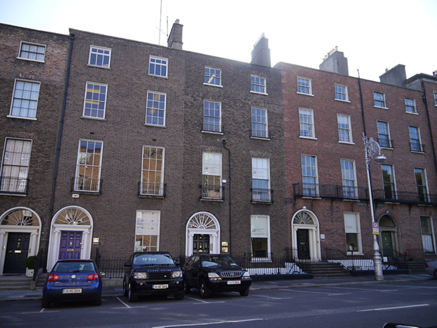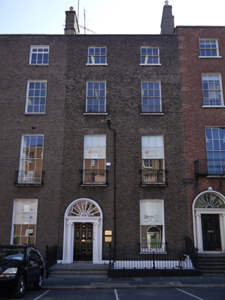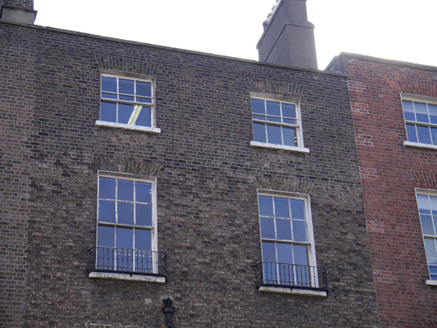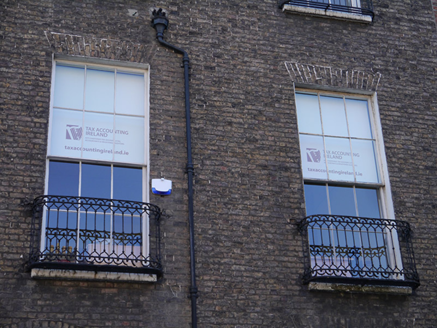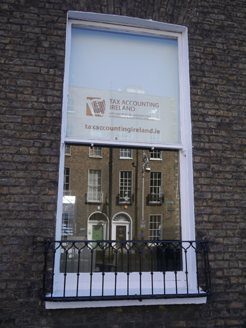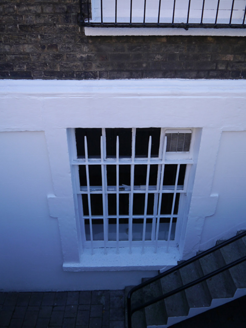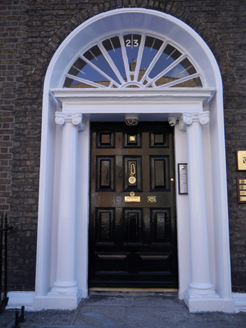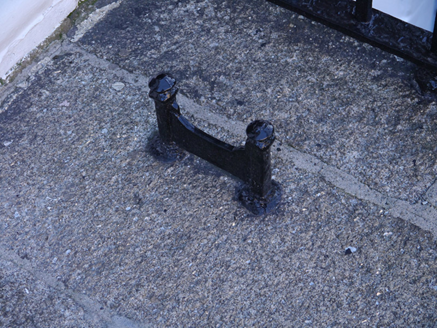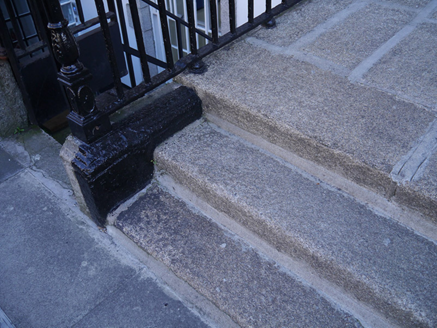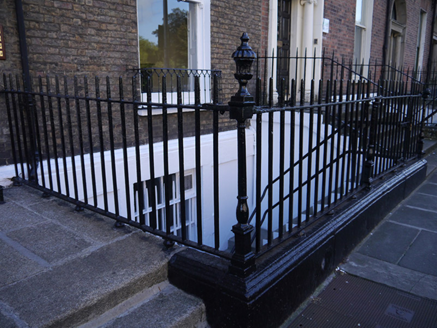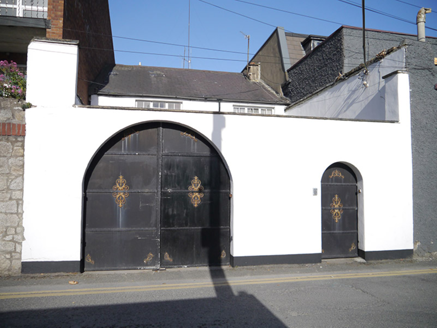Survey Data
Reg No
50930110
Rating
Regional
Categories of Special Interest
Architectural, Artistic
Original Use
House
In Use As
Office
Date
1810 - 1830
Coordinates
316619, 233094
Date Recorded
25/09/2015
Date Updated
--/--/--
Description
Attached two-bay four-storey over basement former townhouse, built c. 1820, with three-stage return to rear (east). Now in use as offices. M-profiled roof to rear, concealed by brick parapet with masonry coping. Shouldered rendered chimneystacks to party walls with lipped yellow clay pots and brick upper section to north-west chimney. Parapet gutters with cast-iron hopper and downpipe breaking through to centre. Brown brick walling laid in Flemish bond over rendered walling to basement beneath granite plinth course. Square-headed window openings with brick voussoirs, rendered reveals and masonry sills, granite surrounds to basement. Largely six-over-six possibly original timber sliding sash windows, three-over-three to third floor and eight-over-eight to basement, replacement one-over-one to ground floor with cavetto horns. Iron balconettes to second, first and ground floor, cast-iron grille to basement opening. Round-headed door opening with brick voussoirs, moulded reveals and recessed surround containing panelled frieze and moulded cornice carried on Scamozzian-Ionic columns over plinth stops, spoked fanlight and raised-and-field timber panelled door with replacement brass furniture. Granite entrance platform with cast-iron boot scrapers, approached by three granite steps flanked by iron railings with decorative cast-iron corner posts on granite plinth, enclosing basement to south-side. Coal-hole cover to pavement. Concrete steps to basement well. Street fronted on eastern side of Fitzwilliam Street Upper. Modernised two-storey mews building to rear (east) with rendered walls and pitched slate roof. Rendered boundary wall lining Lad Lane with round-headed carriage-arch and separate pedestrian door opening both having metal-sheeted gates with decorative iron mouldings.
Appraisal
Built as a pair with the adjoining building to south (50930109), this former townhouse retains its traditional form and proportions, mellow brick which contrasts with the granite dressings, well executed ironwork, and handsome Ionic doorcase and fanlight. The development of Fitzwilliam Street Upper began on the north-end of the western side during the early-nineteenth century. Taken as a whole with Fitzwilliam Street Upper and the east-side of the Merrion Square, this uninterrupted stretch constitutes the longest piece of Georgian streetscape in Dublin. Although largely homogenous in character and form, the subtle variations between the houses are indicative of the speculative nature of development.
